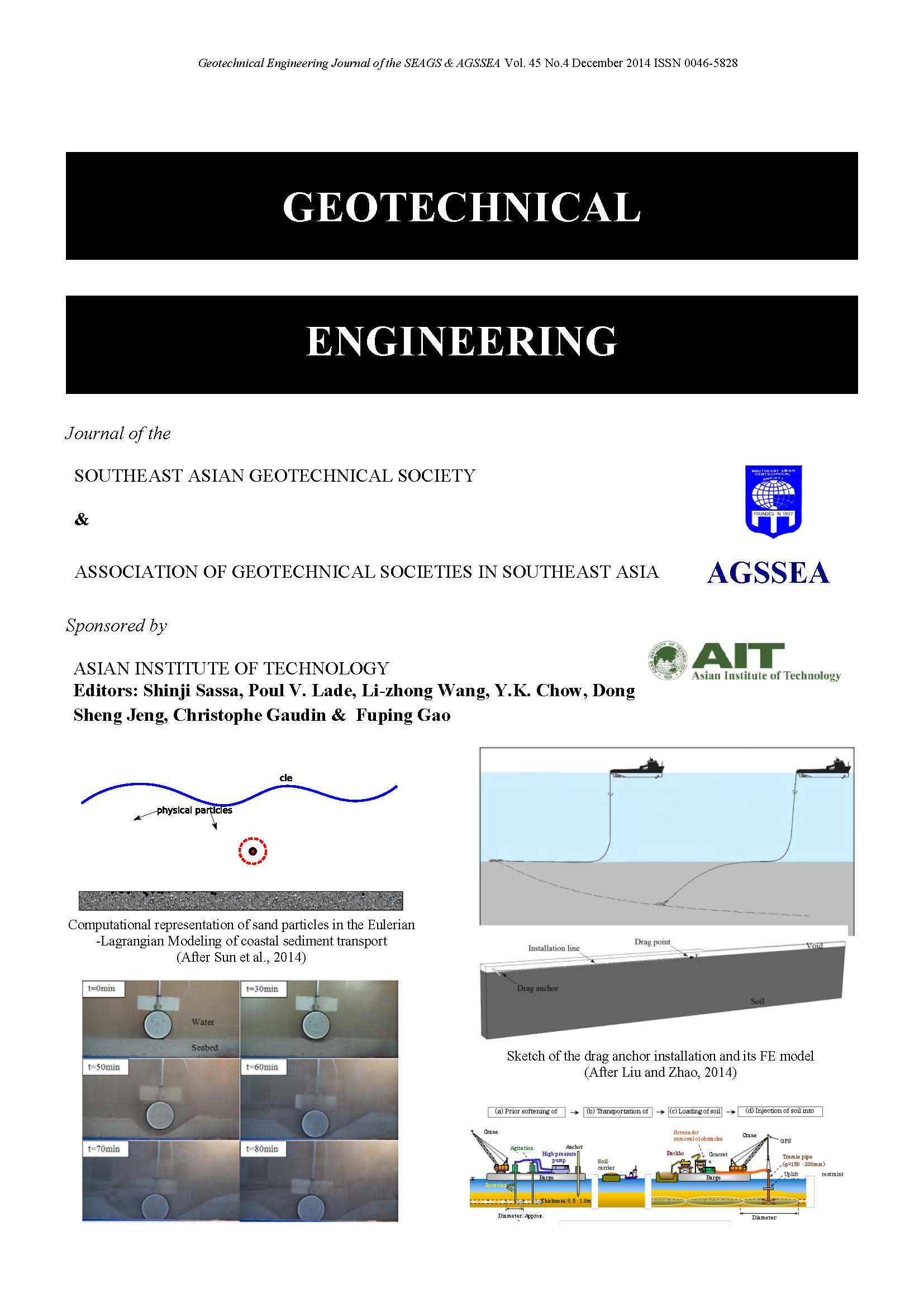Centrifuge Modelling of the Seismic Responses of a Gently Sloped Liquefiable Sand Deposit Confined within Parallel Walls
Main Article Content
Abstract
A series of one-dimensional (1-D) centrifuge shaking table tests was performed to investigate the seismic responses of a 4° sloped liquefiable sand deposit confined within parallel walls, having various penetration depths and row distances, and with different fixed ends. The parallel walls relieved the build-up of excess pore water pressure in the deeper enclosed sand layer, but no obvious reductions were observed in the excess pore water pressure in the shallower sand layer during large earthquakes. The effective relief of the excess pore water pressure and decrease in the surface settlement within the walls would be expected to improve at deeper penetration depths and for higher wall bending stiffness values. Stiffer parallel walls with fixed ends can constrain the enclosed sands more effectively and prevent lateral displacement induced by lateral spreading occurred in gently sloped ground. The walls can also transmit larger accelerations into the enclosed soils. Protected structures would not, therefore, come in contact with the parallel walls, thereby avoiding experiencing larger accelerations.
Article Details

This work is licensed under a Creative Commons Attribution-NonCommercial-NoDerivatives 4.0 International License.
Copyright © 2019 Association of Geotechnical Societies in Southeast Asia (AGSSEA) - Southeast Asian Geotechnical Society (SEAGS).


